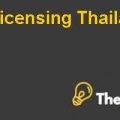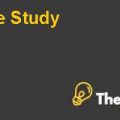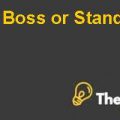
Q 1) Analyze Metapath’s capital structure, in particular the various forms and pieces of participating preferred stock from the multiple previous rounds of financing.
Ans 1 ) The Metapath’s capital structure was designed in four rounds such as A, B, C and D. The round A and B were the same rounds and they were designed on January 20th 1995. It was made when Bessemer provided the funds for the venture. Both companies were awarded the redeemable preferred stock and this stock was featured the same as debt. This similarity of the preferred stock as debt is because of the reason that it pays dividend and the principle amount that has to be paid at the maturity. STI insisted to follow the straight redeemable structure because STI was hesitant to invest in non-redeemable equity even though that equity was providing them the liquidity option with it.
The Round C and D both contributed $8 million that comprised of $9.6 million invested capital in the company. The convertible preferred stock instruments were used in these two rounds.
Please refer the Exhibit 1 given in the Appendices section in the end of the solution.
Q 1a) How does this capital structure affect the offer from RSC?
Ans 1a) Bialek and Hansen both were a part of the RSC funds management and they were concerned about the capital structure because the investment that was proposed by the RSC was in participating convertible preferred stock. The affect was that the convertible preferred stock features of the participating convertible preferred stock as it could easily be converted into common equity by the holder. This was due to the conversion rate and offering price was set by the conversion rate. On the other hand, this stock automatically converted itself into common stock during the public offering and it carried liquidation preferences same as the participating convertible preferred stock. But PCPT also differentiated itself from the standard convertible preferred during the sale although the holder of this convertible preferred stock has already received the face value of that stock.
Q 1b) How RSC’s participating would preferred interest with the other tranches of preferred stock?
Ans 1b) The participating of the PCPT differs from the convertible preferred stock at the time of sale as the holder already receives the face value of this stock and has the right to participate in the voting of the company so as to elect the board of directors and to decide where to invest in the future. It also gives preferences to the holders of the stock same as the preferred stock at the time of declaring the dividend. On the other hand, common stock and preferred stock only gives the holder the right of either to vote or to get dividend first respectively but in the case of the RSC, the participating convertible preferred stock gets both the facilities in terms of voting right and in terms of preferred dividend.
Q 2) How do you value the RSC offer? Describe the payoffs of the proposed series e preferred in exhibit 2. You can assume that Metapath would be raising $10.75 million as specified in the term sheet, not the $11.75 million as specified in the case. For this purpose, assume that the terminal payoffs occur in 3 years, before any dividends are actually paid or accumulate. Also note that the payoffs will depends on whether Metapath is sold to another company or whether it is taken public. Please describe the payoffs under each scenario.
Ans 2 ) The RSC offer is not valuable as the CellTech offer because of the reason that it will dilute the ownership of the existing shareholders and it will dilute the per share value of the Metapath.
Pay-off Structure:
The total amount to be paid is $10.75 million and terminal pay-off will be done for 3 years and it will paid off at the end of 3 years with full payments. Moreover, it will be paid before any dividend payment will be paid either at the end of each year individually or cumulative at the end of the third year. The dividend will be paid at the rate of 8% of the net profit that the company will earn.
Payoff under IPO Scenario:
Initial public offering means that the company is going to the general public for raising funds for the future expansion of the business operations in which companies are responsible to pay return to its shareholders in terms of dividend at the end of the years from its net profit. In the case of Metapath, the pay-off structure of $10.75 million is not worthwhile for the shareholder of the company as it reduces the earning per share of the shareholders. If the company goes for the IPO than the company will generate funds from ...................
This is just a sample partial case solution. Please place the order on the website to order your own originally done case solution.









